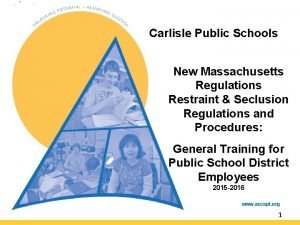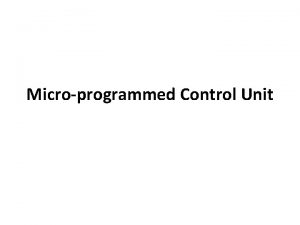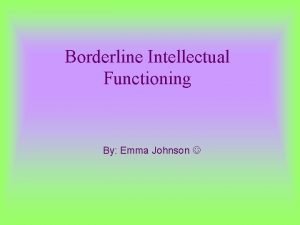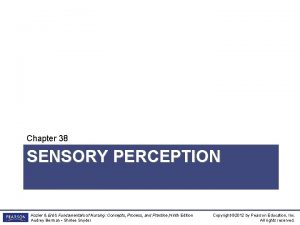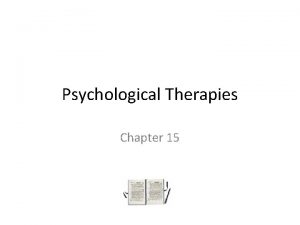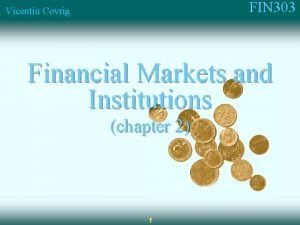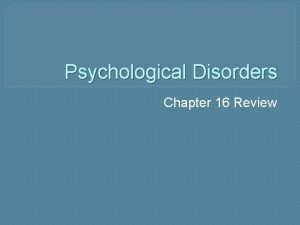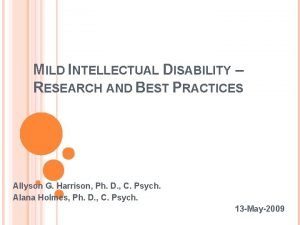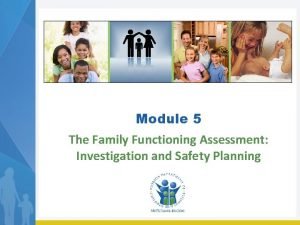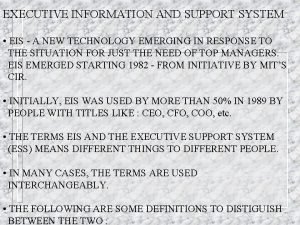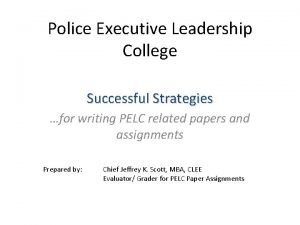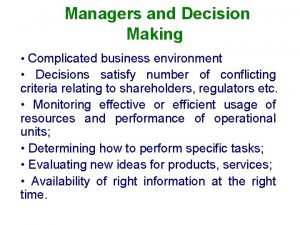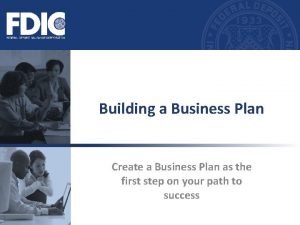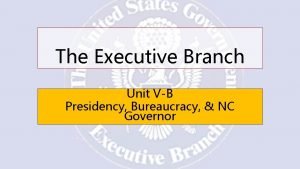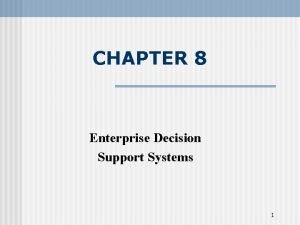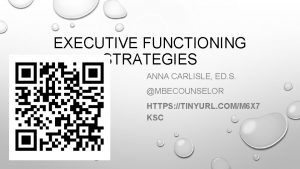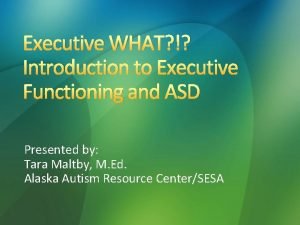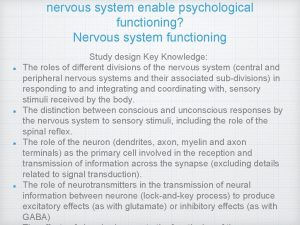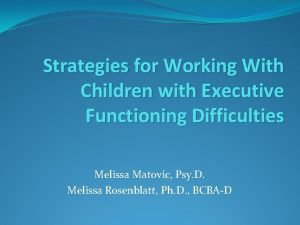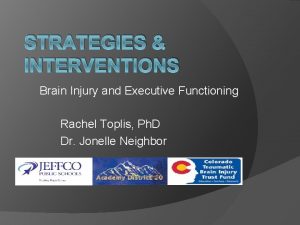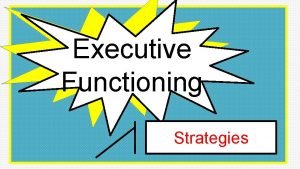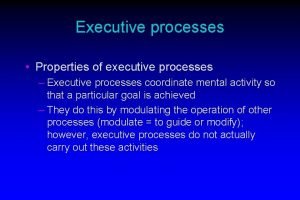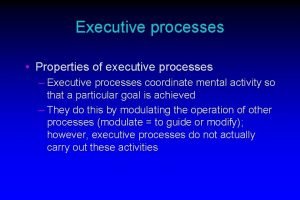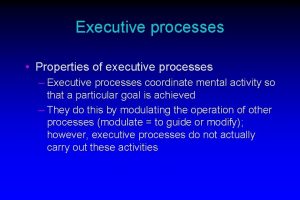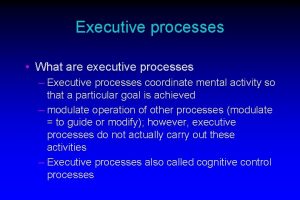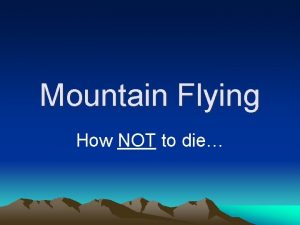Executive Functioning Strategies Anna Carlisle Ed S Mountain



































- Slides: 35

Executive Functioning Strategies Anna Carlisle, Ed. S. Mountain Brook Elementary School, AL @mbecounselor carlislea@mtnbrook. k 12. al. us https: //tinyurl. com/m 6 x 7 ksc

https: //tinyurl. com/mphbn 6 n

Learning Objectives 1) Explain how executive functioning skills support student success 2) Identify symptoms of weakness in executive functioning skills 3) Strategize ways to support executive functioning development


a diverse group of cognitive processes that act in a coordinated way to direct perception, emotion, thought and action a set of cognitive abilities that control and regulate other abilities and behaviors and are necessary for goaldirected behavior

o Emotional Control o Impulse Control o Self-Monitoring o Working Memory o Metacognition o Flexibility o Planning/ o Organization Prioritizing o Problem Solving o Task Initiation

Cognitive Processes and Executive Functioning o If we have some knowledge of how the brain works, we can better identify accommodations.

Top-Down Approaches o What is top-down processing? o External strategies to calm emotions o Intentional, explicit instruction of Intentional, explicit top-down strategies can improve: o Emotional Control o Impulse Control o Self-Monitoring

How are Top-Down Strategies Implemented? o Identify a strategy o Teach, Model, Practice, Repeat o Reduces arousal o Improves affect and motivation

Top-Down Examples o Progressive Muscle Relaxation o Breathing Exercises o Bubbles o Water

Bottom-Up Processes o Our brain’s natural ability to: o Reduce sensory input o Attend to a task o Ignore distractions

Signs of Bottom. Up Deficits o o o Emotional/Impulse control Inattention Self-Monitoring Working Memory Planning

Get out your Math journal and homework folder. I can’t find my journal! Oh, look! Here’s my library book… What are we supposed to be getting?





Environmental Accommodations o o o o Remove distracting materials Reduce visual stimuli Larger font Fewer items on a page Reduce the number of problems Provide a checklist Use reminders

Environmental Accommodations to Improve Organization o Organize Materials o 3 -ring binder o o o Use dividers with labels Reinforced Paper 3 -hole punch all worksheets Writing materials Minimize! o Organize Actions o Provide a list for: o Class Routines o Homework

Impulse Control Emotional Control Planning Prioritizing Task Initiation o Cue student randomly to identify if they are on task o Provide limited number of opportunities in a class for questions o Provide only enough support for success o Utilize rubrics to break down large assignments o SBI

Objectives of SBI o Specific behavioral strategy o What was the feeling/goal? o Motivational level on a scale from 1 - 10?

Assumptions of SBI o Everybody is doing the best they can. o Behavior is not incomprehensible or random. “Behavior follows patterns, which reveal themselves to the curious observer free of prejudice or blame or theory. ”

SBI Strategies o "How exactly did you do that? " o "How did you know it was time to ____? " o "How long had you been thinking about ___? " NOTE: We are asking "HOW? " not "WHY? "

SBI Strategies o o o Body double Give one direction at a time Utilize technology Time timer Random cues Each designed to increase self-awareness

Right to Left New to old information o Reduce o Novelty o Need for Flexibility o Ability to revise plans in the face of: o Obstacles o Set backs o New information o Mistakes o Changing conditions

Accommodations o Advance familiarization/Pre-teaching o Provide experiences in smaller structured setting o Role play o Advance warnings (fire drills, tests, being called on in class) o Systematic, gradual exposure to new situations

o Help the child reframe the situation o Modify the nature of the task: o Mental effort (3/10) o Decrease speed, volume or complexity of information o Break down tasks o Make tasks close ended o Provide templates and rubrics

o Help the child understand inflexibility o Teach them to recognize when they are inflexible o Teach coping strategies (top down processes) o Use relaxation strategies, scaling, thought stopping, or attention diversion o Plans or rules for specific situations that arise frequently (Social Stories) o Develop default strategies that they can fall back on o Use scripts in problem situations o Teach them that people make mistakes

Working Memory o Ability to hold information in the mind while performing complex tasks o Teacher provides multi-step instructions together, then student is able to break them part o Copying information from the board o Thinking of homework list and deciding which materials are needed to complete each o Incorporates the ability to draw on past learning or experiences

Working Memory o Cuing Devices (Timer): o Arrange for verbal/auditory reminders o Visual cues prominently displayed o Naturally occurring cues o Storage Devices: o Agenda books or calendars o Notebooks or binders o Electronic device

Metacognition o Take a bird’s eye view of oneself in a situation o Allows you to observe how you problem solve o Self-monitor or self-evaluate through self-talk, either aloud or silently, to help focus on the task at hand o Very broad skill o Several of the strategies we have discussed will help to develop metacognition, specifically SBI.

Strategies for Homework o Review upcoming and long-term assignments at the beginning of each week o Schedule a time for homework each day o Consider using mornings for homework o Physical space should reflect school work environment o Estimate time required o Not enough time? What is priority? o Extra time? What will you do now? o Pomodoros (specified work time followed by short break)

Online Tools and Support o educationtothecore. com o Graphic Organizers o o inspiration. com powertyping. com readwritethink. org typingclub. com o literacymathideas. blogspot

Online Tools and Support, cont. o Understood. org o Go to link School & Learning at Home for links to tools for use at home and school o https: //www. understood. org/~/media/040 bf b 1894284 d 019 bf 78 ac 01 a 5 f 1513. pdf o worksheetworks. com

Sources o Barkley, R. A. (2012). Executive Functions. o www. Russell. Barkley. org for videos on ADHD and EF o Dawson, P. , & Guare, R. (2009). Smart but scattered: The revolutionary "executive skills" approach to helping kids reach their potential. o Dr. Nowell. com - Executive Functioning: Practical Strategies for Students with ADHD, Presentation by Dr. David Nowell o Go to link School & Learning at Home for links to tools for use at home and school o Moyes, R. A. (2014). Executive Dysfunction: Strategies for Educators and Parents
 Dawes severalty act
Dawes severalty act Brady carlisle
Brady carlisle Carlisle public school
Carlisle public school Lions gate hope centre
Lions gate hope centre Carlisle public school
Carlisle public school Functioning of micro programmed control unit
Functioning of micro programmed control unit Adaptive functioning
Adaptive functioning High functioning autism
High functioning autism Child functioning module
Child functioning module Principal of incubator
Principal of incubator Borderline intellectual functioning
Borderline intellectual functioning Five principles of psychological functioning
Five principles of psychological functioning Sensory functioning fundamentals of nursing
Sensory functioning fundamentals of nursing Child functioning module
Child functioning module Advantages of group therapy
Advantages of group therapy Adaptive functioning
Adaptive functioning Well functioning financial markets
Well functioning financial markets Is a reaction to vague or imagined dangers
Is a reaction to vague or imagined dangers Accommodations for borderline intellectual functioning
Accommodations for borderline intellectual functioning Six domains of the family functioning assessment
Six domains of the family functioning assessment What are signs of high functioning autism
What are signs of high functioning autism Phrasal verb for stopped working
Phrasal verb for stopped working Torfaen council chief executive
Torfaen council chief executive Executive information system
Executive information system Police executive leadership college
Police executive leadership college Senior executive classifier
Senior executive classifier Types of decision making in management
Types of decision making in management Trevino and nelson managing business ethics
Trevino and nelson managing business ethics Executive decision meaning
Executive decision meaning Promotions o'cool
Promotions o'cool Executive summary of a business plan
Executive summary of a business plan Drexel executive mph
Drexel executive mph Are executive orders informal powers
Are executive orders informal powers Executive support system
Executive support system Executive order 13779
Executive order 13779 Executive house apartments state college
Executive house apartments state college




